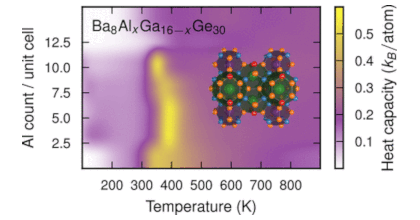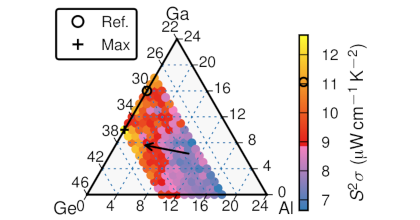Unlocking the potential of a caged star: Thermoelectric quaternary clathrates
J. Brorsson
Doctoral Thesis
(2021)
url: https://research.chalmers.se/en/publication/525133

Heat losses are an inevitable consequence of any energy conversion process, dictated by the second law of thermodynamics. This not only leads to an eternal struggle, via the pursuit of maximal efficiency, it also undermines our efforts to solve the two issues that pose the most significant challenges to modern society: climate change and the worlds surging energy need. Thanks to our inherent ingenuity, humankind has, however, been adept at finding ways of harnessing the power of heat; from the fires that lit up the neolithic era to the steam engines of the industrial revolution. Thermoelectrics can, in some sense, be seen as the next step in this endeavour, since they allow the direct conversion of a temperature difference to an electric voltage.
This thesis summarises a seven year long journey, which has focused on a fascinating and unique group of thermoelectric materials, namely inorganic clathrates. Though these have been the subject of intense research over the last three decades, many of their properties and attributes have, as of yet, not been fully explored. In particular, this project has addressed three fundamental questions: (i) Why is the lattice thermal conductivity intrinsically low? (ii) What is the impact of chemical ordering on the physical properties? (iii) How can the electronic transport be optimised?
Due to the inherent complexity of these materials, computational and experimental methods should ideally be used in tandem, in order to gain further insights. This project has, thus, involved the use of both atomic scale simulations, based on a combination of density functional theory, alloy cluster expansions, and Monte Carlo simulations, as well as advanced measurement and characterisation techniques. Through these efforts, the confusion regarding the origin of the low lattice thermal conductivity has partly been clarified. In addition, it has been shown that chemical ordering in these materials leads to the emergence of an order-disorder transition, which has a direct impact on the physical properties. Last but not least, it is found that the consideration of ternary systems can facilitate the enhancement of the thermoelectric performance by enabling not only independent tuning of doping level and band structure via the composition, but also manipulation of the nano- and microstructure.



